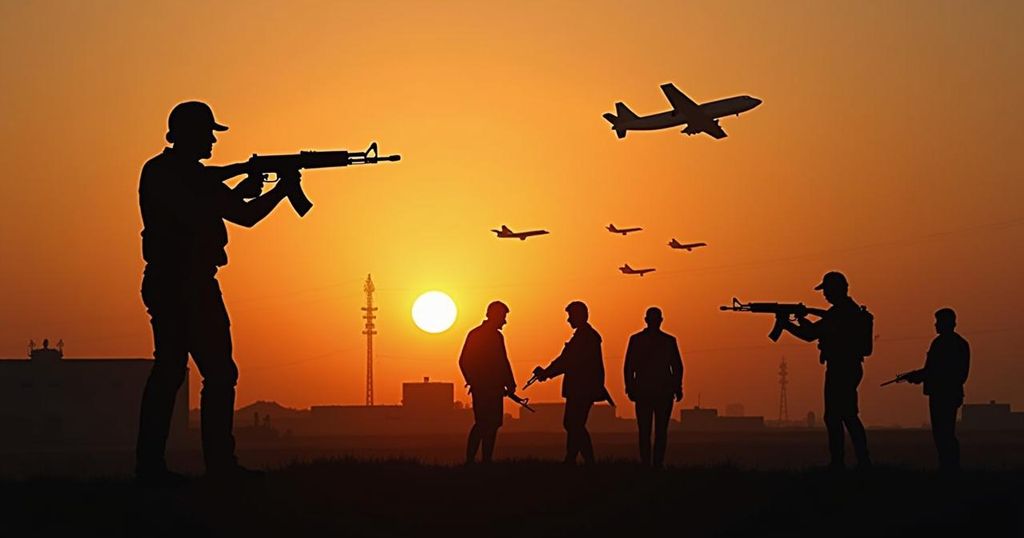The killing of Hezbollah leader Hassan Nasrallah by Israeli airstrikes represents a significant escalation in the conflict, increasing fears of a broader regional war. The Israeli military has intensified its operations across Lebanon, with dire humanitarian consequences for civilians. Hezbollah’s anticipated response, coupled with Iran’s involvement, adds layers of complexity to the already volatile situation. Diplomatic solutions appear limited, suggesting a long-term conflict ahead.
The recent escalation of violence in the Middle East, particularly the killing of Hezbollah leader Hassan Nasrallah by Israeli airstrikes in Beirut, has heightened concerns over a potential regional conflict. The Israeli military’s targeted assault on Nasrallah’s underground headquarters on Friday represents a significant intensification of hostilities between Israel and Hezbollah, a militant organization that has been involved in ongoing attacks against Israel amid the broader conflict stemming from the war with Hamas in Gaza. Hezbollah, facing considerable losses including the deaths of several high-ranking commanders and the detrimental impact of the destruction of its communication devices, now confronts a strategic dilemma. Israel has signaled a potential shift in its military focus towards Lebanon, with its stated aim being to restore the safety of its citizens displaced by ongoing clashes. The Israeli airstrikes have led to devastating consequences for Lebanese civilians, resulting in a substantial loss of life and widespread displacement. Many have fled from southern Beirut in search of safety as residential areas are targeted. Despite calls for a ceasefire from international actors such as the United States and France, Israeli leadership has continued its offensive, dismissing proposals for a pause in hostilities. The U.S. government has publicly distanced itself from direct involvement in the airstrikes while recognizing the implications of Nasrallah’s death, with President Biden referring to it as a “measure of justice for his many victims.” As Hezbollah considers its next move, it remains evaluated by various analysts who emphasize that despite the losses, the group retains critical military capabilities including precision-guided missiles. This complexity suggests that a significant retaliation from Hezbollah is inevitable, raising the stakes for a potential full-scale war. Iran’s role is also crucial, with its government indicating that the killing of Nasrallah represents a severe escalation. The nature of any Iranian response remains closely watched, particularly given the risk that it could further involve U.S. interests in the region. In the face of ongoing regional tensions, experts assert that sustainable diplomatic solutions appear elusive, and the conflicts involving Israel, Hezbollah, and Hamas are unlikely to reach a resolution in the near future.
The implications of the recent conflict between Israel and Hezbollah are multifaceted, reflecting historical animosities, regional power dynamics, and broader geopolitical implications. Hezbollah has been an integral part of Iran’s strategy in the Middle East, acting as a conduit for its influence. The militarization of the conflict, particularly in relation to civilian areas and the evident humanitarian toll, has rendered Lebanon a battleground whereby the consequences spill over beyond borders. Furthermore, the impacts of U.S. foreign policy within the region and its interactions with both Israel and Iran shape the responses of these groups. The recent escalation signifies a particularly volatile moment that could threaten not only regional stability but also international diplomatic efforts for peace. The backdrop of increasing aggression and military confrontations necessitates a careful examination of the potential outcomes of this latest round of violence.
The assassination of Hassan Nasrallah by Israeli airstrikes marks a critical juncture in the ongoing conflict between Israel and Hezbollah, raising fears of an expanded regional war. Despite heavy losses, Hezbollah remains capable of retaliation, thereby increasing the likelihood of an escalated conflict. Iran’s involvement and the broader implications for U.S. interests in the region further complicate the situation. The absence of durable diplomatic resolutions suggests a protracted period of instability in the Middle East, as underlying conflicts with Hamas and Israel persist alongside the growing animosities with Hezbollah. Such dynamics require vigilant observation and reassessment of strategies by all involved parties to avert a potential full-scale war.
Original Source: www.cnn.com






